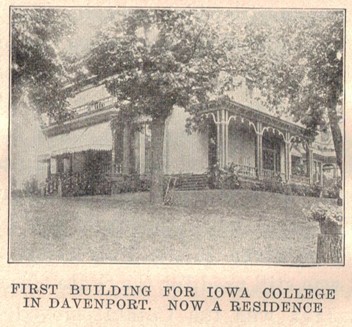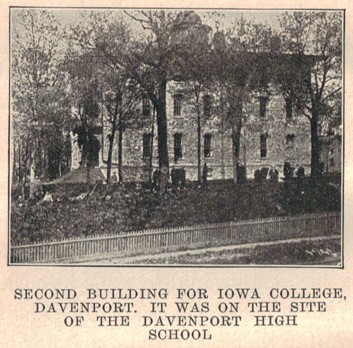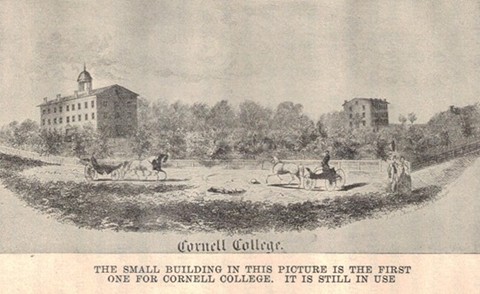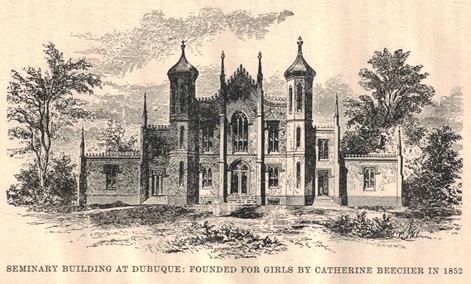In 1846 the trustees of a new college decided to put their school at Davenport. It was named Iowa College, because long before that time a group of young men in New England, while they were college students, had made up their minds to come to the Territory of Iowa on purpose to become ministers and to build a college for their church people. They held meetings and talked a great deal about the college in Iowa�the one they were going to build. When they reached Iowa in 1843, they wanted to buy a
large piece of land and to put their college just where the present city of Independence is built; but the wise men in New England said that it would not be best to do that. Since the money to buy the land would have to be raised in New England, there was nothing to do but find another place. That was the reason Iowa College happened to be placed at Davenport. But in 1859 it was moved to Grinnell.
The group of young men who were so much interested in the future of Iowa has been called the Iowa Band of 1843, because they had bound themselves together to go into the western territory as missionaries. They became ministers and at the same time helped to support the new college and the public schools which were being opened. Very many interesting things have been written about them and their work in Iowa. They were students at Yale College and at Andover Seminary before they set out for Iowa, and at those two schools their plans were first laid for the Iowa College they intended to build.
About 1853, while a minister was riding across the Iowa prairies, he came to a hill from which he had a fine view of the surrounding country. He could see in all directions, but toward the south there was a beautiful valley; and toward the north the level country stretched away for many miles. This minister had tried nearly ten years before to build a college in another place. He had really found a teacher to become the head of his college and at one time it promised to be a success. But it was too early, it seems, to open such a school.
Now he determined to place a college on the very hill where he stood and looked about on the rich country. For that very purpose he bought the land. He began to raise the money to put up a building for the students who, he felt, would be certain to come there after the college was ready. Within a very short time a small brick building had been completed�it is still in use�and the first students were admitted to the Mt. Vernon seminary. That was the beginning of Cornell College.







